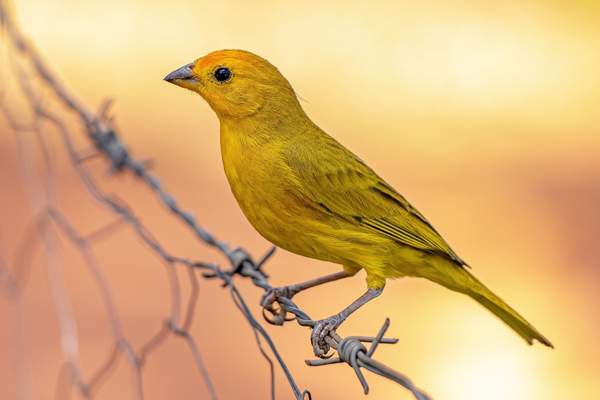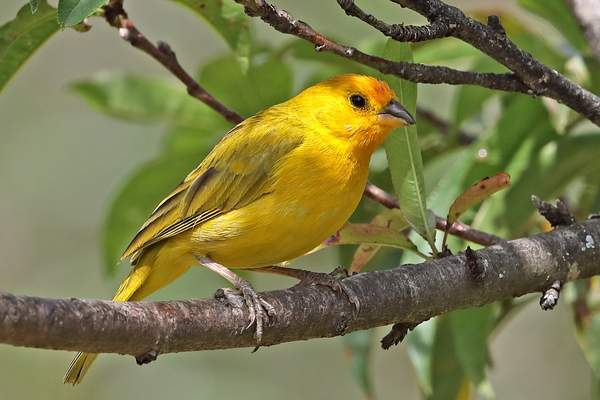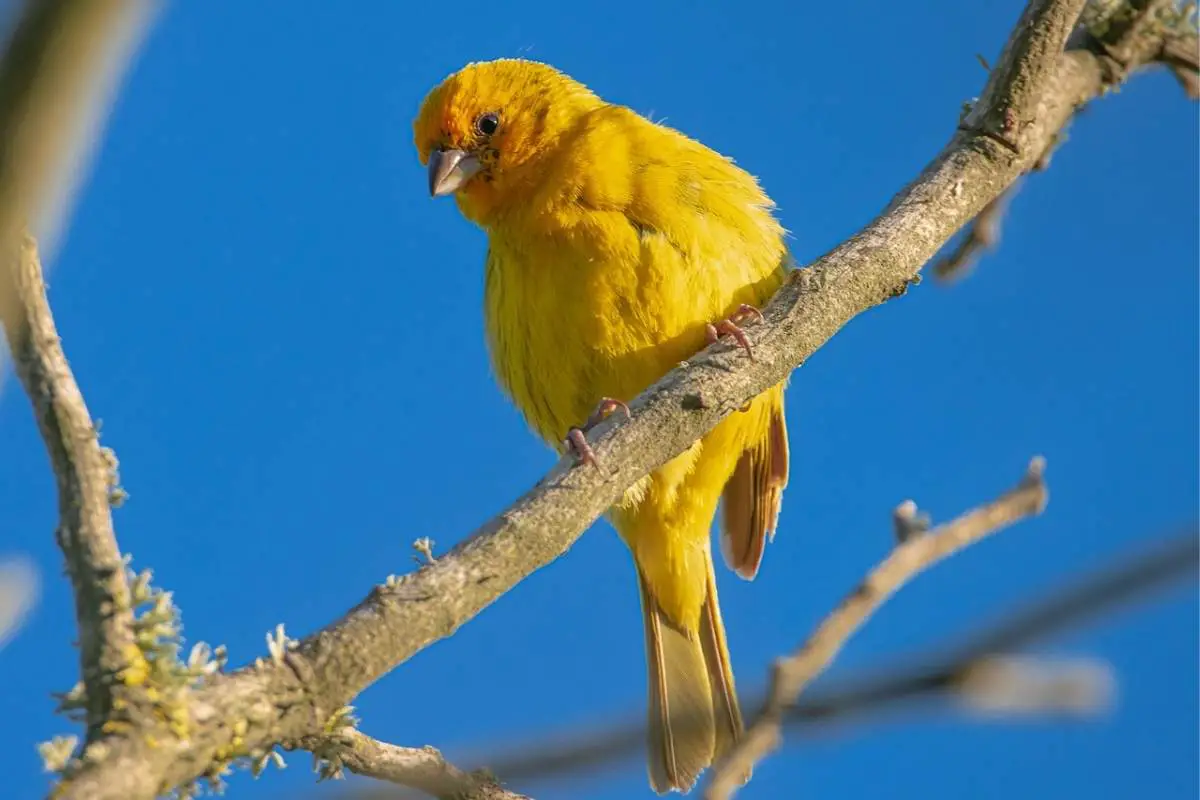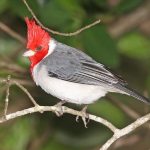Common Name: Saffron finch
Scientific Name: Sicalis flaveola| Size | Diet | Range in Hawaii | Status in Hawaii |
|---|---|---|---|
| 4.5 in. - 5 in. | seeds, insects, a variety of plants and green food. | Oahu, Kauai, and Big Island | least concern |
Saffron finches, also known as Sicalis flaveola, are small, brightly colored birds native to South America. They are members of the thraupidae family, which also includes tanagers and hummingbirds.
Saffron finch
Appearance

Saffron finches are small birds, typically measuring around 4.5 to 5 inches in length and weighing around 0.5 ounces. They have a fairly slender, sparrow-like build, with a small, triangular head and a pointed, slightly curved beak.
The most striking feature of saffron finches is their bright, yellow-orange plumage, which covers most of their body. They have a solid yellow head and breast, with orange-brown wings and tail. The wings and tail feathers have dark brown or black edges, giving them a scalloped appearance.
Saffron finches have short, rounded wings and a short, square-shaped tail. Male and female saffron finches look similar, but males tend to be slightly larger and have a more intense orange coloration.
Juvenile saffron finches have a duller, more brownish plumage, with a yellow-brown head and breast and brown wings and tail. As they mature, their feathers gradually become more yellow and orange.
Diet
Saffron finches are omnivorous birds, meaning they consume a varied diet that includes both plant and animal matter. In the wild, their diet consists of a variety of seeds, grains, and other plant material, as well as insects, spiders, and other small invertebrates.
Behavior
Saffron finches are social birds that are typically found in large flocks in the wild. They are known to be active and energetic, constantly foraging for food and interacting with each other.
Saffron finches are generally peaceful birds, and they are not known to be aggressive towards other birds or animals. However, they can be territorial during the breeding season and may defend their nesting area from intruders.
Nesting
Saffron finches typically build their nests in trees, bushes, or other vegetation, often near the ground. They construct their nests out of grass, leaves, and other plant material, and line the inside with softer materials such as feathers or moss.
The female saffron finch typically lays a clutch of 2 to 4 eggs, which she incubates for about 12 to 14 days. Both the male and female participate in building the nest and caring for the eggs and young.
Once the eggs hatch, the chicks are altricial, meaning they are born naked and helpless. The parents feed the chicks a diet of small insects and other invertebrates, which provide the necessary protein for their growth and development. The chicks fledge, or leave the nest, at around 2 to 3 weeks of age, at which point they are able to fly and forage for food on their own.
Saffron finches are known to be prolific breeders, and they may produce several clutches of eggs in a single breeding season. In captivity, saffron finches can be bred year-round if provided with the proper conditions, such as a suitable nest box and a consistent diet.
Habitat

Saffron finches found in a variety of habitats, including grasslands, savannas, and agricultural areas. They prefer open, grassy areas with scattered trees or bushes, and they are often found near water sources such as streams or ponds.
Range
In Hawaii, the Saffron Finch is an introduced species, and it is found on several of the main islands, including Oahu, Kauai, and Hawaii Island.
Conservation Status
In their native range in South America, saffron finches are not considered to be threatened or endangered. They did not currently meet the criteria for the IUCN Red List and has an evaluation level of least concern.
Interesting Facts
1. A good pets
Saffron finches can make good pets for individuals who are interested in keeping birds as companions and are willing to provide them with the necessary care and attention.
2. Shy to sing
Some individual saffron finches may be more hesitant to sing in the presence of people, particularly if they are not used to being around humans or if they feel threatened or stressed.
3. They are not migratory
They are not migratory birds, meaning they do not make long journeys between breeding and non-breeding areas. Instead, they are resident birds, staying in the same general area throughout the year.
Frequently Asked Questions:
How long does a Saffron Finch live?
The lifespan of a saffron finch depends on a variety of factors, including its diet, habitat, and overall health. In the wild, saffron finches typically live for 3 to 5 years, although some individuals may live longer.
How do Saffron Finch reproduce?
During the breeding season, male saffron finches engage in courtship behaviors, including singing, dancing, and displaying their colorful plumage, in an effort to attract a mate. Saffron finches are known to be prolific breeders, and they may produce several clutches of eggs in a single breeding season.
How fast can a Saffron Finch fly?
They are generally not strong fliers, and they are more likely to hop or walk along the ground than to fly long distances.




